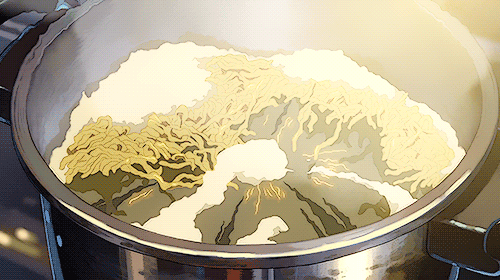Dance Of The Spaghetti

When we cook spaghetti, noodles loosen up as they take on water, and undergo a beautiful choreography driven by the thermal energy of the boiling water. Although they become more flexible, they still maintain some structure, i.e. they are smooth curves.
We can make a crude model of the spaghetti noodle as a chain of short rods of length that are connected end to end, but otherwise free to rotate about the connections. Under these assumptions, calculate the root mean squared distance (in ) between the ends of the noodle (i.e. the blue and red balls in the diagram) as it dances in the pot.

Details and Assumptions :
- .
- .
- Ignore the nasty issue of the fact that spaghetti cannot pass through itself.
- Assume the spaghetti is alone in the pot and doesn't interact with the walls.
The answer is 1.870828693.
This section requires Javascript.
You are seeing this because something didn't load right. We suggest you, (a) try
refreshing the page, (b) enabling javascript if it is disabled on your browser and,
finally, (c)
loading the
non-javascript version of this page
. We're sorry about the hassle.
The displacement d between the start and end of a dancing spaghetti noodle can be written as the sum of displacements between the end points of the small, contiguous rods. If we write the displacement vector between hinge i − 1 and hinge i as r i , we have d = ∑ i r i .
The square of this is then d 2 = ( r 1 + r 2 + … + r N ) ⋅ ( r 1 + r 2 + … + r N ) = ( r 1 2 + r 2 2 + … + r N 2 ) + ( r 1 ⋅ r 2 + r 1 ⋅ r 3 + … + r N − 1 ⋅ r N ) = N δ l 2 + δ l 2 i = j ∑ cos θ i j where θ i j is the angle between displacement vectors i and j .
We must average this expression over all possible realizations to find the mean squared distance ⟨ d 2 ⟩ . As there is no correlation between adjacent displacement vectors (and no long range correlation either), we have ⟨ d 2 ⟩ = N δ l 2 + δ l 2 i j ∑ ⟨ cos θ i j ⟩ zero = N δ l 2 So that the root mean squared distance is simply N δ l .